They might not be raindrops on roses or whiskers on kittens, but that doesn’t mean that we love them any less. Welcome back to My Favorite Things, the weekly column where we grab someone in speculative circles to gab about the greatest in geek. This week we sit down with author Anthony Francis. His urban fantasy series featuring magical tattoo artist Dakota Frost starts with Frost Moon. He also writes steampunk time travel, and you can get to know his heroine Jeremiah Willstone with Jeremiah Willstone and the Clockwork Time Machine.
What does Anthony love when he’s not writing about kick-ass women and mathematical magic? Spoiler alert: on-campus superheroes, inconvenient characters, cinematic universes, a television show that takes place everywhere and everywhen, and weretigers becoming weremathematicians. Curious? Read on for more!
What makes you turn the page? Hang onto your seat? Line up for tickets when a movie’s announced, even if it might be years before it comes out? What makes you re-read something you’ve already read a dozen times?
Whatever that is, to me, makes it a favorite.
Now, I could tell you that my favorite movie is Kiki’s Delivery Service, runner up Alien, both of which I’ve watched dozens of times. Or I could tell you that my favorite writer is H. P. Lovecraft, runner up Larry Niven, both of whose stories I’ve read dozens of times (or, in the case of my favorite roadtrip audiobook, Lovecraft’s short story, “The Dunwich Horror,” perhaps even hundreds of times).
But I’m a writer, and knowing my lifetime favorites doesn’t tell you much about my writing. I don’t write young adult empowerment stories or body horror, or even cosmic horror, for that matter; and while I do dabble with space opera, I spend most of my writing time mixing of magic and mathematics, weretigers and airships in the Dakota Frost and Jeremiah Willstone series — and my current obsessions are often driven by what I need to research to support what I write.
So, a more interesting question is: what are my favorites right now?
Current Favorite Webcomic: Dumbing of Age
Runner Up: Questionable Content
Webcomics are, empirically speaking, my favorite art form after audiobooks. I start almost every day by checking the comics feed on my newsreader — so it would be all too easy to guess that what I really like about them is simply convenience. But that’s not it; I actively seek out webcomics, I purchase the graphic novel versions when (if) they come out, and some of my favorite comics ever started as webcomics.
Freed from commercial constraints, webcomics can explore things simply beyond the reach of the typical monthly comic or newspaper strip. Webcomics range from the simple (Laugh-Out-Loud Cats, a single-panel cross between first-generation comics and LOLcats) to the sublime (Dresden Codak, a long-form explanation of science, totalitarianism, and transhumanism), from the regular (Kevin and Kell, running like clockwork for closing on two decades) to the irregular (um, Dresden Codak – no offense, gang), from gag-a-day (Penny Arcade, riffing on the gaming industry and life for twenty years) to massively long form (Megatokyo, a glacially paced manga about magical girls, ninjas, and gamers), from single panel (Laugh-Out-Loud Cats) to simple three-to-four panel strips (XKCD, a stick-figure strip about the cosmos) to traditionally formatted comics pages (Girl Genius, about a steampunk girl genius, and Supernormal Step, about magic, superheroes, and self-confidence), to experimental layouts involving infinite scrolling (again XKCD).
My favorite webcomics often look like traditional comics, but deal with the topics of transhumanism. A Miracle of Science is a buddy cop drama slash romance about a traditional human detective falling for a post-human representative of the Martian colony mind. My all-time favorite webcomic, Questionable Content, thematically if not actually set in the same universe as A Miracle of Science, brings this theme into our day-to-day life, positing a world where the AI Singularity has already happened, and the patrons and staff of a local coffeehouse must deal with robots among them.
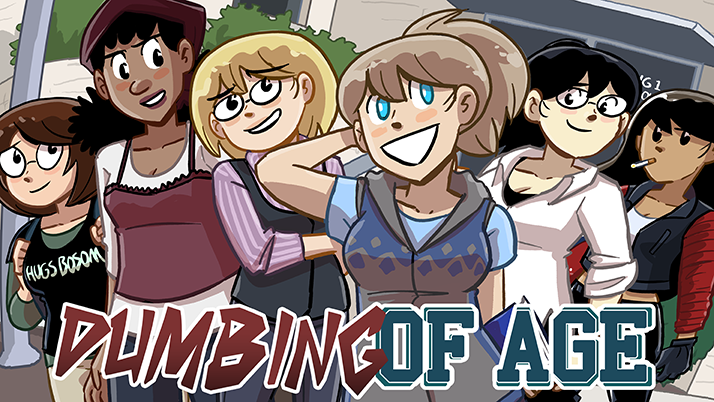
But the comic that currently has me hanging on the edge of my seat is Dumbing of Age. Ostensibly a college melodrama contenting itself with the single speculative element of an on-campus superhero, Dumbing of Age is really a sprawling exploration of the sharp corners of life, following an enormous cast of characters dealing with very real issues of identity, truth, prejudice, romance, capability, and personhood. As a writer, I admire Dumbing of Age’s structure — both moral, in that it has very few true villains, and even if a character gets a moment on a soapbox to proclaim their high horse, future events often prove the situation truly nuanced — and interpersonal, in that it has a huge cast of characters which was seeded into the comic from the very beginning. The author of Dumbing of Age, David Willis, repurposed most of these characters from several previous webcomics to create a new pantheon with built-in relationships. That’s a useful trick: stories must focus to be effective, but filling a world only with the things needed to support the core conflict can feel spare and unrealistic. The real world is filled with complex, inconvenient relationships — with characters — and reusing character relationships creates pre-existing connections that can enrich a story — enabling Dumbing of Age to wring humor and conflict out of (to take the current example) something as simple as friends helping another friend walk to the hospital after she injured her toe in the gym.
Current Favorite Superhero Movie: Justice League
Runner Up: Thor: Ragnarok
When I was growing up, there was Superman: the Movie, and that was it. There was superhero television — The Incredible Hulk comes to mind, and both Batman reruns and Superfriends cartoons were good for laughs. But there were no good superhero movies — my hopes were raised, then dashed by Tim Burton’s Batman movie (sorry, Tim & Mike!) — and the genre never seemed to be getting better.
That all changed with Iron Man.
The “good superhero movie” barrier had already been broken by Batman Begins in 2005, and arguably by the X-Men in 2000, and perhaps even earlier by Mystery Men, but Iron Man was in my mind the first successful movie set in a superhero universe. Superman, strange visitor from another planet, was born alone in Action Comics #1 … but imitators like Batman appeared shortly thereafter, first independently, then in issues of the same comics, finally teaming up a decade later, building the foundation for the sprawling superhero pantheons we’ve come to know and love. But for thirty years after Superman the Movie, movies got stuck retelling Superman’s origin story over and over again, no matter what superhero it was and no matter how little sense it made — partially due to the shortsightedness of movie studios, partially due to the egotism of directors wanting to tell their own stories, and partially just due to cost.
But in 2005 a band of plucky, determined and creative executives at Marvel Studios took out a half-billion-dollar line of credit — think a Merrill Lynch Adamantium Visa Card — and set out to create a superhero universe, planning from the start to include as many characters as they possibly could. Iron Man was the result. I could go on and on about Marvel Cinematic Universe movies and how I love them, Captain America, Guardians of the Galaxy, Thor: Ragnarok, blah blah blah, but what I really want to talk about is the home of my favorite superhero, Green Lantern. That’s the DC Universe, location of Gotham and Batman and their counterparts Metropolis and Superman.
Way back in the day, Marvel Comics envied DC’s success with its team comic book Justice League of America, and so created The Avengers. Fifty years later, DC looked at the success of the Avengers movie and wanted the flipside of that success with its own Justice League movie — so it tried to recreate the Marvel Cinematic Universe with its own version, the DC Extended Universe. And oh, it tried. After the execrable Man of Steel (an otherwise decent science fiction film that only became a Superman movie in the last five minutes), after the tragically miscut Batman v Superman: Dawn of Justice (if you see this, please, please, please only see the Ultimate Edition, which is genuinely a good movie, as opposed to the cinematic release, which is confusingly unwatchable), and after the should-have-been-great Suicide Squad, DC finally got its groove with Wonder Woman. But despite living in an overlapping universe, none of these — not even the superb Wonder Woman — worked as well as their Marvel counterparts.
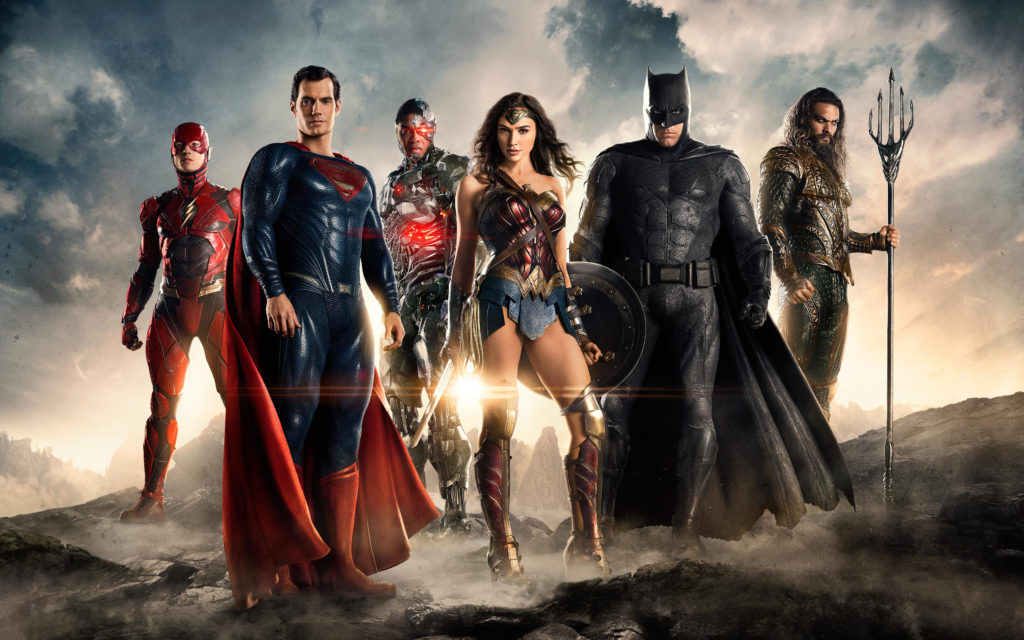
With Justice League, DC finally got it right. All the storylines of the different movies came together. The hidden corners of the DC universe — Aquaman, Atlantis, Green Lanterns, Mother Boxes, and Darkseid — came to light at last. And most importantly, Justice League set its own distinct tone. Even the best Marvel movies, as serious as they may be, have their tongues planted partially in cheek. That’s all right: Marvel characters are more flawed and realistic than DC characters, and need that edge of humor to balance them out. But DC characters are more idealized and archetypal than Marvel characters, and they needed a different balance: they needed heroism. Don’t get me wrong: Justice League has humor — especially from Ezra Miller’s standout Flash (upon first seeing the huge villain: “I’m afraid of obnoxiously tall people”), but also surprisingly from Ben Affleck’s Batman (later: “Jesus! He is tall!”) — but there’s also heroism. Oh, is there heroism. Superman is more heroic in the first ninety seconds of Justice League than all the previous DC movies combined, and of the seven big battle scenes of the movie, four of them feature, focus or even hinge on saving civilians. The best exchange is between nervous newbie Flash and a seasoned Batman, who tells him, Patton-like: “Save one. Don’t talk. Don’t fight. Just save one person. After that, you’ll know what to do.” Heck, Danny Elfman even dusts off his old Batman theme and the John Williams’ Superman the Movie theme.
Justice League isn’t perfect. No movie is (except, perhaps, Kiki’s Delivery Service, Alien, and Scott Pilgrim vs the World, but then, I digress). But, dang it, it’s a great superhero universe movie, and it’s about damn time that DC stepped up to the plate so that Marvel didn’t have to shoulder the whole load all by itself.
Current Favorite TV Show: Doctor Who
Runner Up: Westworld
I don’t always first love my future favorites. When Star Trek first came on in reruns as a child, I remember thinking, “What a dorky looking ship! Who’d put sticks on a flying saucer?” It’s now one of my favorite television shows. When Star Wars came out, I waited a whole year to see it; it’s now one of my favorite movie series. And when I caught a four-minute sequence of Doctor Who’s “The Android Invasion,” with Tom Baker diving out a window to avoid his android duplicate, that didn’t stop me from turning it off to go play on the beach. Only after picking up one of the Doctor Who novelizations (I think, Invasion of the Dinosaurs, because, dinosaurs, and I was like, twelve going on eight, or something) with a gloriously overblown introduction by Harlan Ellison blasting Star Trek and Star Wars in favor of “the greatest science fiction show of all time, Doctor Who” that I at last became hooked.
Harlan’s paean to Doctor Who is embarrassing in retrospect — as an adult, I’ve read enough overblown introductions (with apologies to Neil Gaiman — I loved View from the Cheap Seats! Sorry!) to understand that it was hyperbole. But my love of the show endured. From my bedroom in South Carolina, I watched it on North Carolina Public Television, desperately adjusting the aerial to try to get a decent signal, programming the VCR so that I could watch it after I finished mowing the lawn, watching it again and again. I saw Peter Davidson as the Fifth Doctor, watched “Earthshock” and sat dumbfounded crying “Adric!”, dropped my jaw at the Sixth Doctor’s costume — and dropped my jaw further when the station started Doctor Who over with the First Doctor, William Hartnell, in black and white.
Eventually, Doctor Who degenerated and ended. I never saw the last few episodes until years later, and I wasn’t much motivated to. A television movie came and went, not really rewarding too many repeat viewings. Audio plays and novels existed, but the show slowly receded into the distance … until one day I found a copy of Doctor Who, Series 1 at Wondercon in San Francisco.
“Doctor Who is back?” I asked, feeling like I was seeing Doctor Who for the first time. Under Russell T. Davies, Doctor Who had budget. Daleks could fly and robot spiders could scuttle. Doctor Who now had actors capable of taking direction (with all due respect to the actors and directors who came before, television has gotten better at that overall). Doctor Who now had writing — sometimes foolish and twee, sometimes edgy and daring, sometimes just brilliant — but, most importantly, Doctor Who now had arcs, long, glorious, sprawling plot arcs in which the tiniest offhand comment by a side character could in reality call up every single bit of the show’s 50 year history.
Because Russell T. Davies didn’t throw out the history of Doctor Who. He didn’t overdose on references, but he didn’t try to pretend that the history didn’t exist. His controversial successor, Steven Moffat, expanded on Davies’ frameworks, creating sprawling storylines like the Cracks in the Universe or the Timeline of River Song. Showrunners of Doctor Who love to say that viewers need a viewpoint character, and certainly the show does so the Doctor has someone to play against; but the real innovation of the recent Doctor Who series is that the Doctor is no longer just a mysterious problem solver, but has at last become a real protagonist, a person with a history and personality and wounds and goals whom we can empathize with.
Modern Doctor Who has replaced monster-of-the-week with real drama — episodes where the Doctor spends aeons atoning from guilt; two-parters where he uneasily cracks jokes with the universe’s greatest villain; entire seasons where he gives up traveling to save the life of his worst enemy. Stories where he falls into love and out of love and is consumed with guilt and accepts his own flaws and foolishness.
Doctor Who will never be a work of art like Westworld, a finely oiled machine of interwoven plots and interrelated characters and overlapping story arcs: the creators of Westworld were free — were required — to throw out the past when they started the series. But by embracing its fifty-year history, while embracing all the tools of the modern age of television — the Golden Age of Television, in my opinion — Doctor Who has created something special, something I even thought was unique.

Doctor Who: “An Unearthly Child”
Imagine my shock, then, when I recently re-watched the first episode of Doctor Who, “An Unearthly Child,” which, after some clunky direction, confused writing, and not the greatest acting in the history of the craft, nonetheless ended with the crew stranded 10,000 years in the past, with the iconic modern police box standing alone on a blasted landscape with an ominous shadow looming over it. I sat up bolt upright, realizing that the seeds of what Doctor Who is — “a mad man with a box, who can go to every star, every planet, every time, every place” — were there from the very beginning. And a few episodes later, when the Daleks show up for the first time, it was like an electric shock. It may have taken another thirty years for them to fly, and forty years for that to become convincing, but from their very first moments, the Daleks were on, surrounding the heroes, screaming at them — and then turning kind, so that they could “LULL THE HUMANS INTO A FALSE SENSE OF SECURITY.”
Yes, a mad man in a box, free to travel everywhen in a universe filled with terrors.
My current favorite.
Current Favorite Character (of Mine): Cinnamon Frost
Runner Up: Jeremiah Willstone
Now, next I could tell you next that my current favorite author is Neil Gaiman; while it’s true I read H. P. Lovecraft the most, and it’s also true that Larry Niven is the author I most aspire to be like, Gaiman’s charged but friendly books are the ones I turn when I want to read something good, both fiction and nonfiction. I loved The Graveyard Book, but his American Gods is quite possibly my favorite novel, up there with Atlas Shrugged, Old Man and the Sea, Gravity’s Rainbow, Ulysses and Ringworld.
Or I could tell you that my favorite genre is steampunk; while it’s true I grew up loving hard science fiction mixed with space opera — Isaac Asimov and Arthur C. Clarke, Robert Heinlein and Hal Clement, Larry Niven and Jerry Pournelle — and while it’s true urban fantasy was my next love — Laurell Hamilton, Patricia Briggs and Jim Butcher — the genre I most enjoy reading and writing is steampunk, that world in which H.G. Wells and Jules Verne were right.
Or I could tell you that my favorite mathematics is surreal numbers: while I grew up reading Martin Gardner’s recreational mathematics puzzle books, and learned to love tensor calculus while working out the equations in P. A. M. Dirac’s General Relativity, it’s John Conway’s extension of the Dedekind cut to transfinite sets which currently holds most of my interest … why are you looking me that way?
But — hang on — it all bears.
Because I think the real reason that right now I’m into sprawling webcomics and superhero universe movies and television shows with intricate backstories is the same reason that I’m into weird math and crossover sci-fi/fantasy authors and in general science fiction blended with mythic fantasy: it’s because I write about characters that live in sprawling mashups of the scientific and the fantastic.
I don’t just want to read and watch science fiction and fantasy: I want to write it. And to write really good science fiction and fantasy, you have to live in the worlds that you create. You have to figure out how the world works, to figure out what the characters want, and figure out what would naturally happen, rather than drive your stories from plot point to plot point. Nabokov claimed that his characters were galley slaves; well, good for him, but I’m actively disinterested in reading about props on an author’s stage. I want an author who can give me characters that are, like people, damned inconvenient, and take them to places we won’t expect.
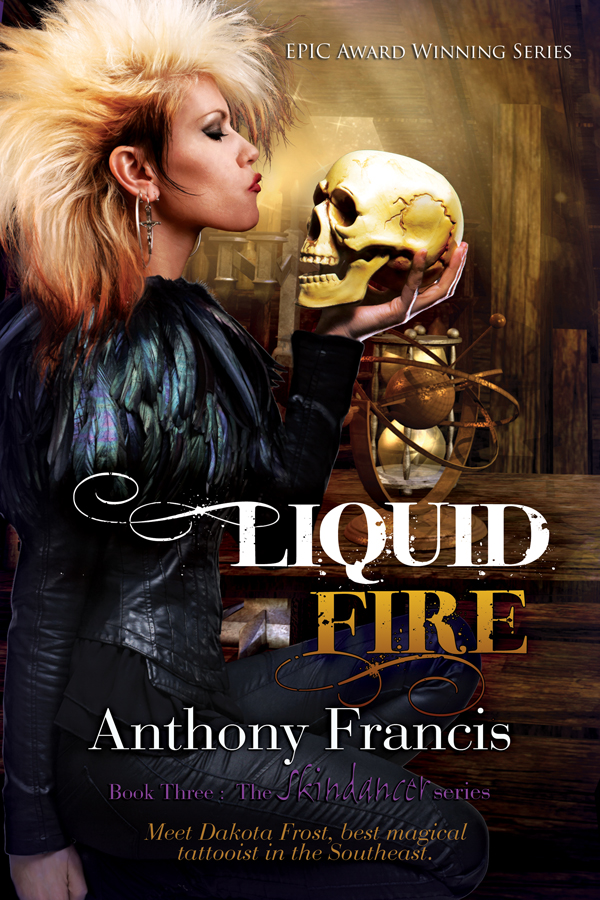 For me, Cinnamon Frost was my first damned inconvenient character, shoving her way onto a scene in my first urban fantasy novel and refusing to leave the book. Where the protagonist, Dakota Frost, was carefully designed, I had no plan for Cinnamon: I didn’t purposely invent a teenage weretiger with dyslexia, Tourette’s — and mathematical genius. I don’t have kids, I’ve never been a teenage girl, much less a weretiger, and while I can do the math I have to, I’ve shown little aptitude for doing really serious mathematics. I remember struggling for weeks on a special projects math course, and my professor staring at my output sadly before pronouncing, “Well, you haven’t gotten much farther than you started.”
For me, Cinnamon Frost was my first damned inconvenient character, shoving her way onto a scene in my first urban fantasy novel and refusing to leave the book. Where the protagonist, Dakota Frost, was carefully designed, I had no plan for Cinnamon: I didn’t purposely invent a teenage weretiger with dyslexia, Tourette’s — and mathematical genius. I don’t have kids, I’ve never been a teenage girl, much less a weretiger, and while I can do the math I have to, I’ve shown little aptitude for doing really serious mathematics. I remember struggling for weeks on a special projects math course, and my professor staring at my output sadly before pronouncing, “Well, you haven’t gotten much farther than you started.”
Now Cinnamon’s doing it again. In the middle of me working on my next Dakota Frost urban fantasy trilogy, Cinnamon decided to insist on her own series of books, running in parallel, hinging in large part on this teenager learning and using math. Now Dakota’s trilogy has become an interwoven hexology so complex I’ve taken to using a huge 14 by 17 notebook to graph out its plotlines, and I’m surrounding myself with piles of books to teach myself all the math that this child prodigy is supposed to know by heart.
So it’s no wonder I like webcomics with hundreds of characters, or like superhero universe movies with dozens of plot threads, or like analyzing the mythos of a long-running television show. I’ve got six hundred fifty thousand words written of an estimated three-quarter million word, six-book series, and I absolutely cannot juggle all this in my head. I need help. No, I need more than that. I need inspiration.
And for a writer, inspiration can come from anywhere. It can come from a long-running webcomic’s deeply interwoven characters, or from a superhero movie’s distillation of two long-running characters down to one key dialog exchange. It can be a sprawling television show’s attempt to turn a McGuffin problem solver into a real person, or the steampunk community’s attempts to turn nostalgia into new stories. It can be Neil Gaiman finely recreating the language of faerie in everyday life — or an odd series of questions, scrawled by some unknown student, that I found in the back pages of a used math textbook, which inspired the fictional research program I’m giving to my teenage weremathematician.
So, I think my current favorites are the things that I have the most fun with. And the things I have the most fun with aren’t just fun in and of themselves, but are also the things that inspire me to write stories that I have fun with — things that help me craft stories that I hope you will have fun with too.
 By day, Anthony Francis programs search engines and emotional robots for the Search Engine That Starts With a “G”; by night, he writes science fiction and draws comic books. He’s best known for his Skindancer urban fantasy series, starting with the 2011 Epic eBook winner Frost Moon and its two sequels Blood Rock and Liquid Fire, all set in Atlanta and starring magical tattoo artist Dakota Frost. He also writes steampunk, including the novel Jeremiah Willstone and the Clockwork Time Machine, many short stories, and numerous talks and panels at various conventions. He’s the co-editor of the anthology Doorways to Extra Time. He’s also a co-founder of Thinking Ink Press, publisher of the steampunk anthologies Twelve Hours Later, Thirty Days Later and Some Time Later, the latter two featuring stories by Harry Turtledove. He’s co-author of the 24 Hour Comic Day Survival Guide, helped organize the 10th anniversary celebrations for 24 Hour Comic Day, and has participated in 24HCD successfully five times. In between all that writing and drawing, he’s managed to squeeze out a dozen scientific publications on artificial intelligence, information retrieval, and emotional robotics, not to mention a few patents and, occasionally, some actual code. You can follow Dakota Frost at facebook.com/dakotafrost or dakotafrost.com; you can follow Jeremiah Willstone at jeremiahwillstone.com or facebook.com/jeremiahwillstone, and you can follow Anthony himself on his blog dresan.com. Anthony lives in San Jose with his wife and cats, but his heart will always belong in Atlanta.
By day, Anthony Francis programs search engines and emotional robots for the Search Engine That Starts With a “G”; by night, he writes science fiction and draws comic books. He’s best known for his Skindancer urban fantasy series, starting with the 2011 Epic eBook winner Frost Moon and its two sequels Blood Rock and Liquid Fire, all set in Atlanta and starring magical tattoo artist Dakota Frost. He also writes steampunk, including the novel Jeremiah Willstone and the Clockwork Time Machine, many short stories, and numerous talks and panels at various conventions. He’s the co-editor of the anthology Doorways to Extra Time. He’s also a co-founder of Thinking Ink Press, publisher of the steampunk anthologies Twelve Hours Later, Thirty Days Later and Some Time Later, the latter two featuring stories by Harry Turtledove. He’s co-author of the 24 Hour Comic Day Survival Guide, helped organize the 10th anniversary celebrations for 24 Hour Comic Day, and has participated in 24HCD successfully five times. In between all that writing and drawing, he’s managed to squeeze out a dozen scientific publications on artificial intelligence, information retrieval, and emotional robotics, not to mention a few patents and, occasionally, some actual code. You can follow Dakota Frost at facebook.com/dakotafrost or dakotafrost.com; you can follow Jeremiah Willstone at jeremiahwillstone.com or facebook.com/jeremiahwillstone, and you can follow Anthony himself on his blog dresan.com. Anthony lives in San Jose with his wife and cats, but his heart will always belong in Atlanta.

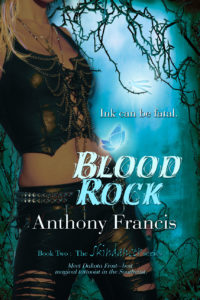
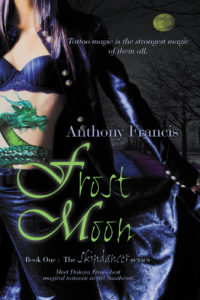
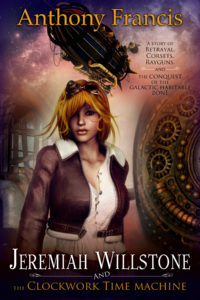
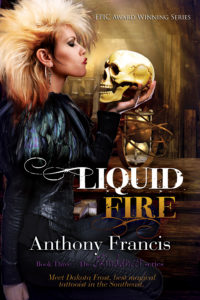
[…] I talk a bit about the stories that inspire Dakota and Cinnamon Frost over at the Speculative Chic blog … to learn more about what’s behind the story, go check it […]